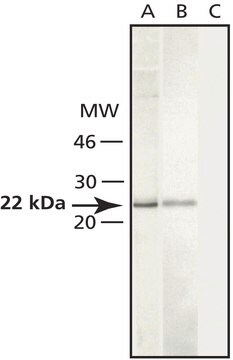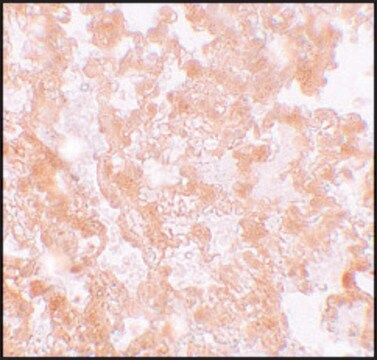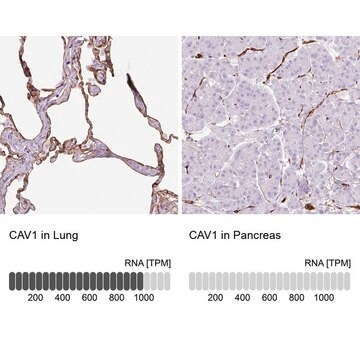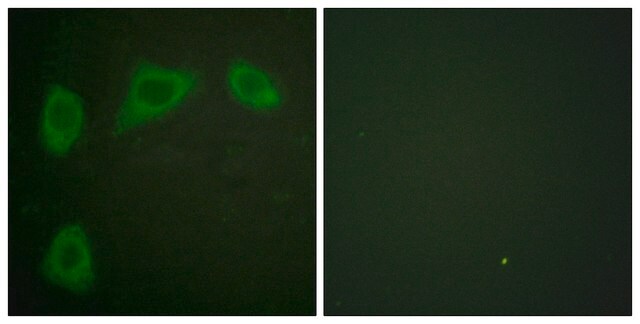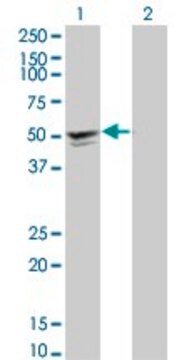Key Documents
SAB4200216
Monoclonal Anti-Caveolin-1 antibody produced in mouse

clone CAV1, tissue culture supernatant
Synonim(y):
Anti-BSCL3, Anti-CAV1, Anti-CGL3, Anti-MSTP085, Anti-VIP21, Anti-caveolae protein, 22kDa
About This Item
Polecane produkty
pochodzenie biologiczne
mouse
białko sprzężone
unconjugated
forma przeciwciała
tissue culture supernatant
rodzaj przeciwciała
primary antibodies
klon
CAV1, monoclonal
Postać
buffered aqueous solution
masa cząsteczkowa
antigen 22 kDa
reaktywność gatunkowa
rat, human, mouse
rozszerzona walidacja
independent
Learn more about Antibody Enhanced Validation
metody
immunohistochemistry: suitable
indirect immunofluorescence: 1:1000-1:2000 using human HUVEC or mouse 3T3 cells.
western blot: suitable
izotyp
IgM
numer dostępu UniProt
Warunki transportu
dry ice
temp. przechowywania
−20°C
docelowa modyfikacja potranslacyjna
unmodified
informacje o genach
human ... CAV1(857)
mouse ... Cav1(12389)
rat ... Cav1(25404)
Opis ogólny
Immunogen
Zastosowanie
Western Blotting (1 paper)
Działania biochem./fizjol.
Postać fizyczna
Oświadczenie o zrzeczeniu się odpowiedzialności
Nie możesz znaleźć właściwego produktu?
Wypróbuj nasz Narzędzie selektora produktów.
polecane
Kod klasy składowania
10 - Combustible liquids
Temperatura zapłonu (°F)
Not applicable
Temperatura zapłonu (°C)
Not applicable
Certyfikaty analizy (CoA)
Poszukaj Certyfikaty analizy (CoA), wpisując numer partii/serii produktów. Numery serii i partii można znaleźć na etykiecie produktu po słowach „seria” lub „partia”.
Masz już ten produkt?
Dokumenty związane z niedawno zakupionymi produktami zostały zamieszczone w Bibliotece dokumentów.
Produkty
Quantitative and qualitative western blotting to validate knockdown by esiRNA. Sigma-Aldrich.com
Nasz zespół naukowców ma doświadczenie we wszystkich obszarach badań, w tym w naukach przyrodniczych, materiałoznawstwie, syntezie chemicznej, chromatografii, analityce i wielu innych dziedzinach.
Skontaktuj się z zespołem ds. pomocy technicznej